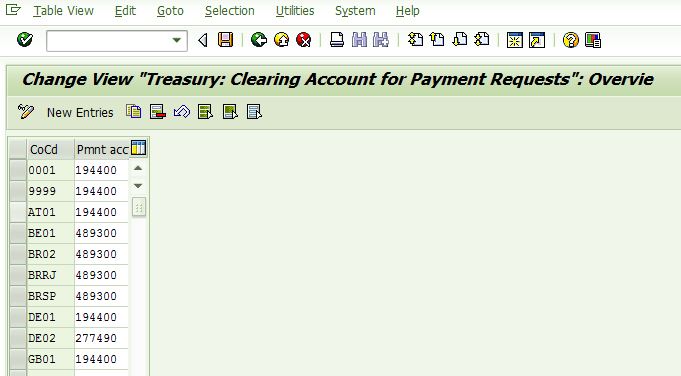
- SAP Community
- Products and Technology
- Enterprise Resource Planning
- ERP Blogs by SAP
- Payment request in Treasury
- Subscribe to RSS Feed
- Mark as New
- Mark as Read
- Bookmark
- Subscribe
- Printer Friendly Page
- Report Inappropriate Content
When doing posting in Treasury, you can generate FI document as usual. Also you can generate payment request in TRM and then do payment via F111 later.
In order to create payment request, you first need to make sure the relative indicator is selected in the payment details.
In Transaction management, when you create a transaction in FTR_CREATE, you can set it in the payment details tab.
(For postings from position management, you also need to maintain it)

You can set the group and netting functionality here which can allow you to pay the requests generated from these transaction together, etc.
Then, you need to make sure the relative flow types allow payment request generation.
The customizing is under:
SPRO->Financial Supply Chain Management
-> Treasury and Risk Management
->Transaction Manager
->Money Market(Foreign Exchanges, etc)
-> Transaction Management
-> Flow Types
-> Define Flow Types

Here you can control the direction to create payment request, incoming and out going or both, even not allowed at all.
Another important point related here is the payment clearing account
When you do posting with payment request, the FI document will not debit the bank clearing acount directly(it will be used in the payment program) but the payment clearing account. So you need to set a default clearing account for the posting.
It's set here:
SPRO->Financial Supply Chain Management
-> Treasury and Risk Management
->Transaction Manager
-> General Setting
->Payment Management
->Payment Request
-> Define Clearing Account for Payment Requests
This clearing account is Company Code dependented as shown in the screen, so you need to maintain it for each Company Code.
The last one I want to write is the bank clearing account PAYRQ-HKBHK which will be used in payment.
When generating payment request from treasury, the default G/L account set in the master data of house bank- account(FI12) and account determination in the customizing are used together for bank clearing account.

- SAP Managed Tags:
- FIN Treasury
You must be a registered user to add a comment. If you've already registered, sign in. Otherwise, register and sign in.
-
Artificial Intelligence (AI)
1 -
Business Trends
363 -
Business Trends
29 -
Customer COE Basics and Fundamentals
1 -
Digital Transformation with Cloud ERP (DT)
1 -
Event Information
461 -
Event Information
27 -
Expert Insights
114 -
Expert Insights
174 -
General
1 -
Governance and Organization
1 -
Introduction
1 -
Life at SAP
415 -
Life at SAP
2 -
Product Updates
4,683 -
Product Updates
251 -
Roadmap and Strategy
1 -
Technology Updates
1,500 -
Technology Updates
92
- Instead of reversing the interest / accrual we have reversed the loan transaction in production sys in Enterprise Resource Planning Q&A
- SAP S4HANA Cloud Public Edition Logistics FAQ in Enterprise Resource Planning Blogs by SAP
- Advance Return Management complete configuration(SAP ARM) in Enterprise Resource Planning Blogs by Members
- ¿Cómo resolver el timbrado del proceso de anticipo de clientes en México? in Enterprise Resource Planning Blogs by Members
- Manage Workflows For Supplier Invoices - if certain amount is reached in Enterprise Resource Planning Q&A
| User | Count |
|---|---|
| 31 | |
| 7 | |
| 5 | |
| 4 | |
| 4 | |
| 4 | |
| 3 | |
| 3 | |
| 3 | |
| 3 |